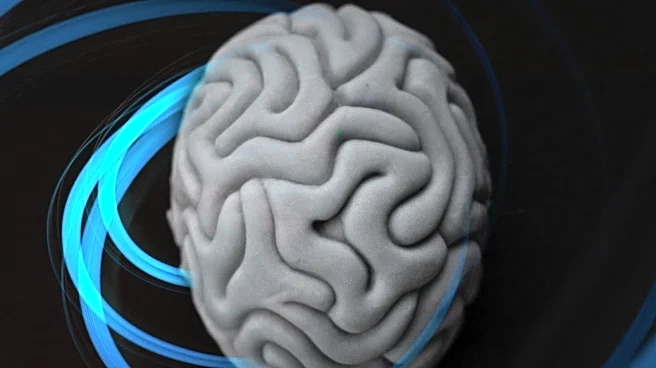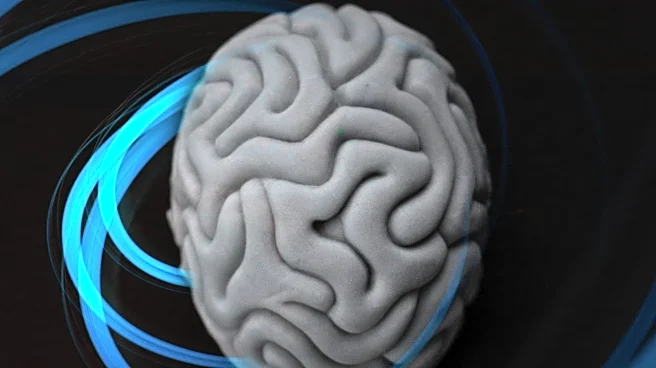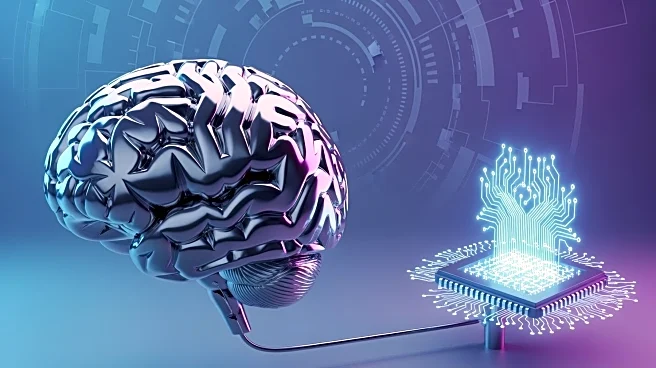What's Happening?
A recent study published in Advanced Science reveals that listening to a steady rhythm, such as a drumbeat or a ticking clock, prompts the brain to dynamically reorganize its networks, syncing brainwaves to the beat in real time. Conducted by researchers
from Aarhus University and the University of Oxford, the study introduces a novel method called FREQ-NESS (Frequency-resolved Network Estimation via Source Separation). This tool maps brain activity by isolating distinct frequencies, showing how rhythms reshape neural connections. Using magnetoencephalography, researchers observed nearly 30 participants listening to a 2.4-hertz tone, discovering new brain networks forming at the sound’s frequency. Existing networks, like alpha networks tied to calm focus, shifted locations or altered rhythms. The study highlights the brain's ability to reconfigure itself in response to rhythmic stimuli.
Why It's Important?
The findings from this study have significant implications for neuroscience, particularly in understanding how the brain responds to external stimuli like music. The ability to map brain activity with precision could transform research into conditions such as epilepsy, depression, and brain-computer interfaces. The FREQ-NESS method offers clearer insights into overlapping signals, potentially enabling personalized brain mapping for mental health or educational purposes. This approach could change how researchers study brain responses to music, consciousness, and broader interactions with the external world, providing new avenues for therapeutic interventions and cognitive enhancement.
What's Next?
The research team is part of a global program aiming to expand the use of the FREQ-NESS method. This expansion could lead to personalized brain mapping applications in mental health and education, offering tailored approaches to treatment and learning. The study's insights may also influence future research into brain-computer interfaces, potentially advancing technology that interacts with neural activity. As the method gains traction, it could become a standard tool in neuroscience, facilitating deeper understanding of brain dynamics and their implications for human behavior and cognition.
Beyond the Headlines
The study's findings challenge traditional views of brainwaves as fixed stations and brain anatomy as distinct regions. By revealing the brain's dynamic reconfiguration in response to rhythm, the research opens up new possibilities for exploring consciousness, mind-wandering, and interactions with the external world. This could lead to ethical considerations in the use of brain mapping technologies, particularly in areas like privacy and consent. The ability to influence brain networks through rhythm may also have cultural implications, affecting how music and sound are used in therapeutic and educational settings.













